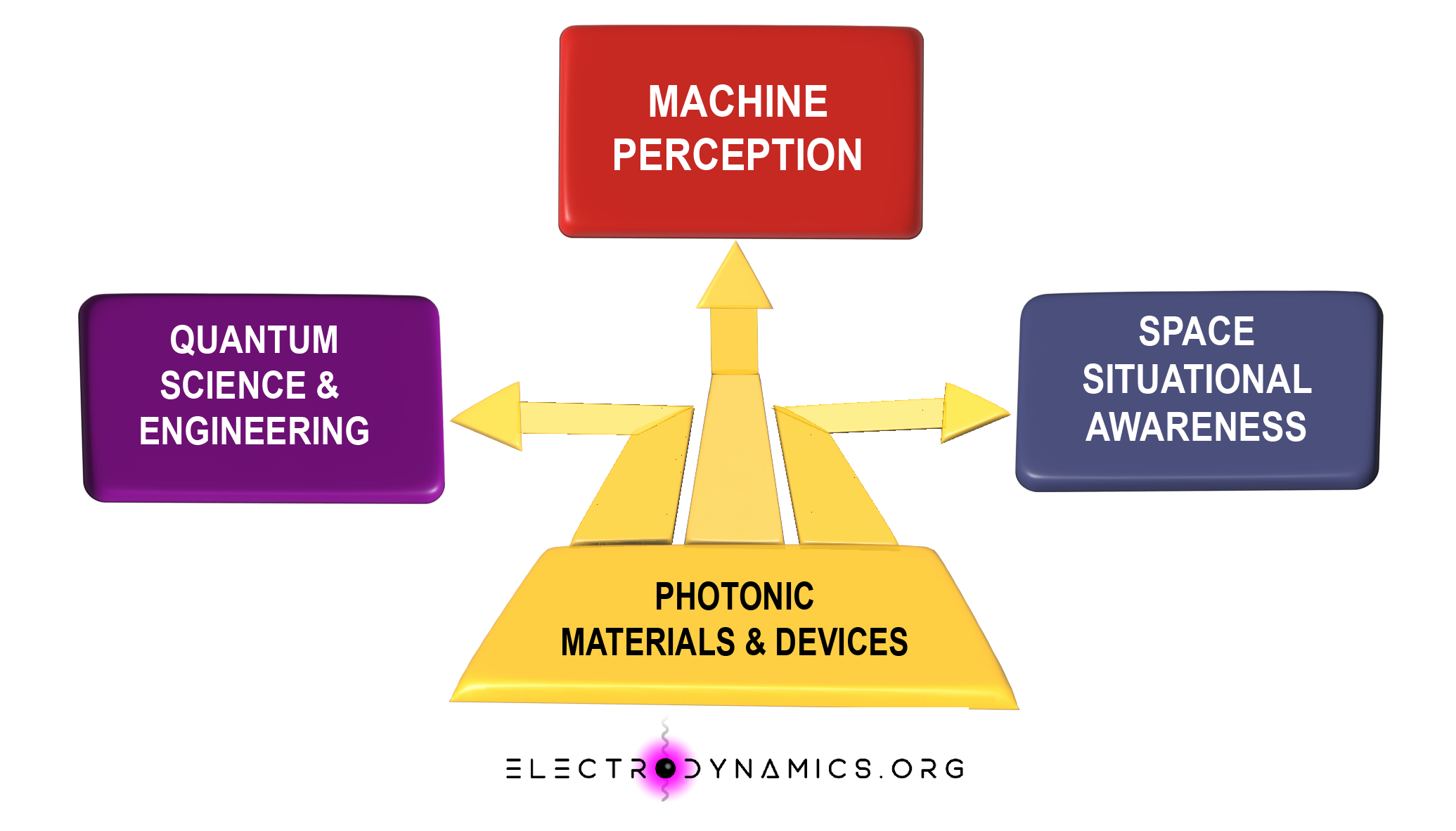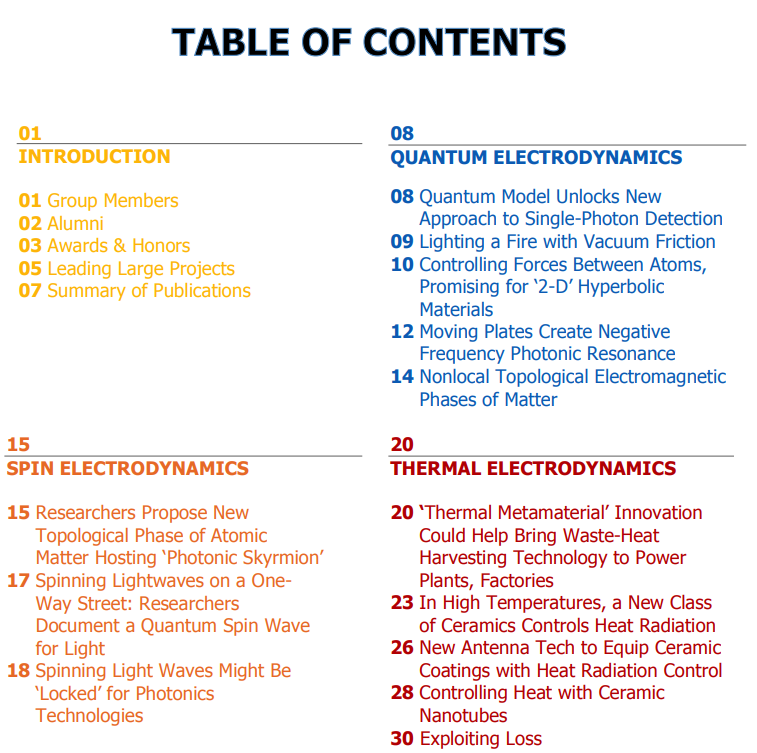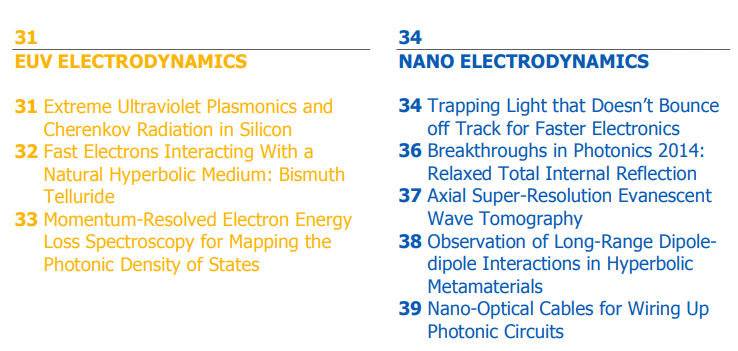Welcome to our research page! This is the most exciting place to start navigating our webpage. It has detailed information on all our scientific endeavors. Please send Prof. Zubin Jacob an email if you have questions or comments zjacob {at} purdue {dot} edu.
Our research spans four major themes shown below. With photonic materials and devices as the root, our projects branch out to three broad application areas related to machine perception, space situational awareness and quantum science and engineering. We take a unique theory-driven-experimental approach in all our projects. We have theory offices as well as three laboratories (thermal, quantum and spin) in the Birck Nanotechnology Center. Our group uses the Scifres Nanofab facility at Purdue University for materials innovation and device fabrication. Even though our explorations are driven by curiosity, our final goal is real-world technology that can impact society in the short term.

You can read a short summary about the various projects over here and take a deeper dive about each sub-topic by navigating through the menu.
- Machine Perception
- Heat-Assisted Detection and Ranging (HADAR)
- TeX Vision
- Thermal Voyager
- Spinning Metasurfaces
- Space Situational Awareness
- Quantum Accelerated Imaging
- Sub-Rayleigh Imaging
- Quantum Optical Sensing
- Quantum Science and Engineering
- Quantum causality
- Superdephasing in NV centres
- Atomistic topological electrodynamics
- Vacuum fluctuations in matter
- Spin qubits and photonic spin density
- Photonic Materials and Devices
- Thermal Photonic Materials
- Dipole-dipole Interactions in Nanophotonics
- Electron Energy Loss Spectroscopy
- Extreme materials
- Topological Optical N-insulators
Here is a summary of our research highlights and a snapshot of the table of contents below.
Go to this link for more information: Research Highlights (2010-2020)


